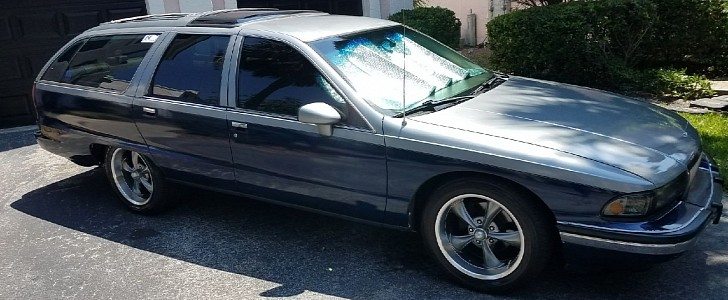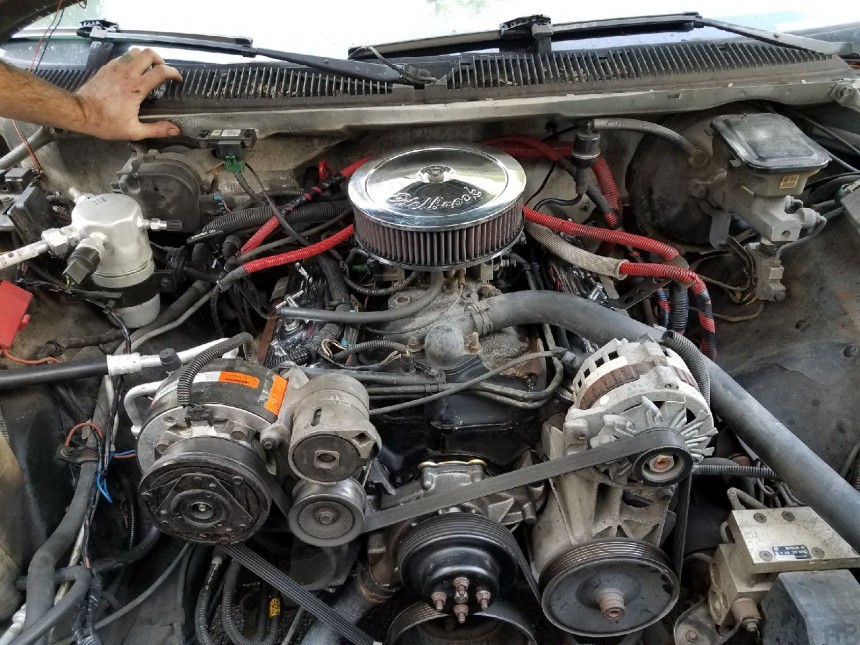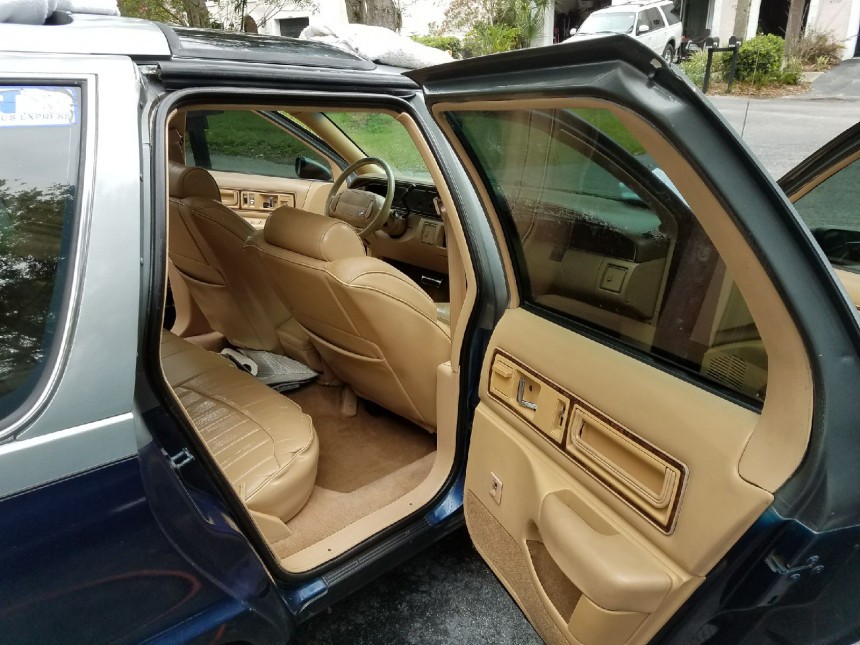After a decade of daily driving this living room on wheels, nothing built before or after comes close to the character and quality of the last long roof B-body.
After my adventures hot-rodding a trio of Rivieras, I wanted a project that would never grow old. That’s why I chose the stereotypical American family hauler. The last generation of GM’s traditional full-size cars arrived for the 1991 model year as the Chevy Caprice and Buick Roadmaster. With a short run of only six years, they have become highly coveted by those of us that can’t abide front-wheel drive.
My journey began with the stereotypical example, white with fake vinyl woodgrain. It had 50,000 miles, a 305 ci (5L) Chevy small block, and the ability to haul 13 inebriated adults. While the Caprice arrived with basic AC controls and cloth seats, Buick only built fully loaded behemoths. Climate control, leather, and decent sound insulation make it a perfect starting point.
The drivetrain consists of a Chevy V8 and 4L60 automatic transmission, identical to what was offered in the Camaro, Silverado, Fleetwood, and most every GM that wasn’t FWD. Featuring throttle body injection, it easily accepts upgrades while offering 20 mpg thanks to the 2.56 differential gears. This is where you reach a fork in the road. Swapping an LS engine can be done in an afternoon if you have help, but the 305 will run forever, making 170 horsepower until Judgement Day.
Therefore, I chose to focus on style and handling. GM spent a boatload of cash developing the ultimate RWD chassis, but most wagons arrived with progressive-rate springs and soft shocks. But since the Impala SS also rode on this platform, upgrades are cheap and easy. Parts like the steering box, control arms (front and rear), brakes, wheels, and even an aluminum driveshaft can be sourced from almost any junkyard or new from incredible aftermarket support. The perfect finishing touch is adding a rear sway (anti-roll) bar, so yank one from a Ford panther body (Crown Victoria Police Car) instead of wasting money.
While many aged owners prefer to preserve the exterior styling, decades in the Florida sun had baked the 3M vinyl woodgrain. Removing it for a full repaint is easier said than done, and I learned the hard way. Instead of being white underneath, GM sprayed a sand/tan color anywhere there would be breaks in the vinyl, then they buried these lines under thick clear coat before the decals were applied. What’s more, the trim pieces are held on by hundreds of studs welded along the body. Paint prep was the hardest part of this build, so don’t attempt it alone.
I needed a few finishing pieces, so I stumbled across a doppelganger in the junkyard. Because these cars are so comfortable and easy to work on, I bought another wagon for parts. It was owned by an Army officer who enjoyed it on the Autobahn while stationed in Ramstein. After stealing the interior trim, I realized the motor was not seized. So, after a battery, water pump, and oil change it awoke. Now with two wagons, I realized the fascination had evolved into an addiction. I sought help from others by joining the GM Long Roof forums.
They guided me to remove a mountain of 90’s BS under the hood to make the engine bay as prolific as the paint job. Starting with the intake, I replaced the convoluted tube with a vintage Edelbrock air cleaner loaded with a K&N carburetor filter.
Next up was the secondary air injection (smog pump). This is easily deleted by running a shorter belt, so use pipe plugs to seal up the exhaust manifolds. Finally, the EGR system consists of an ugly mushroom-shaped valve, so make a block-off plate out of scrap steel and hide it with a fancy ignition coil.
Times change, and I enjoyed dueling wagons for over a decade. Selling them both for a profit is easy but finding something to replace them is nearly impossible. Don’t say we didn’t warn you.
My journey began with the stereotypical example, white with fake vinyl woodgrain. It had 50,000 miles, a 305 ci (5L) Chevy small block, and the ability to haul 13 inebriated adults. While the Caprice arrived with basic AC controls and cloth seats, Buick only built fully loaded behemoths. Climate control, leather, and decent sound insulation make it a perfect starting point.
The drivetrain consists of a Chevy V8 and 4L60 automatic transmission, identical to what was offered in the Camaro, Silverado, Fleetwood, and most every GM that wasn’t FWD. Featuring throttle body injection, it easily accepts upgrades while offering 20 mpg thanks to the 2.56 differential gears. This is where you reach a fork in the road. Swapping an LS engine can be done in an afternoon if you have help, but the 305 will run forever, making 170 horsepower until Judgement Day.
While many aged owners prefer to preserve the exterior styling, decades in the Florida sun had baked the 3M vinyl woodgrain. Removing it for a full repaint is easier said than done, and I learned the hard way. Instead of being white underneath, GM sprayed a sand/tan color anywhere there would be breaks in the vinyl, then they buried these lines under thick clear coat before the decals were applied. What’s more, the trim pieces are held on by hundreds of studs welded along the body. Paint prep was the hardest part of this build, so don’t attempt it alone.
I needed a few finishing pieces, so I stumbled across a doppelganger in the junkyard. Because these cars are so comfortable and easy to work on, I bought another wagon for parts. It was owned by an Army officer who enjoyed it on the Autobahn while stationed in Ramstein. After stealing the interior trim, I realized the motor was not seized. So, after a battery, water pump, and oil change it awoke. Now with two wagons, I realized the fascination had evolved into an addiction. I sought help from others by joining the GM Long Roof forums.
Next up was the secondary air injection (smog pump). This is easily deleted by running a shorter belt, so use pipe plugs to seal up the exhaust manifolds. Finally, the EGR system consists of an ugly mushroom-shaped valve, so make a block-off plate out of scrap steel and hide it with a fancy ignition coil.
Times change, and I enjoyed dueling wagons for over a decade. Selling them both for a profit is easy but finding something to replace them is nearly impossible. Don’t say we didn’t warn you.












